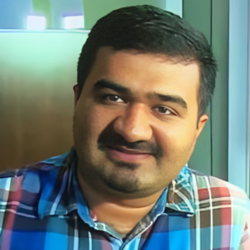A4.1 "Pesek Lecture" - Expanding the Search for ETI through Wide-Band and Broadband Pulsed Signals
Symposium: A4. 52nd IAA SYMPOSIUM ON THE SEARCH FOR EXTRATERRESTRIAL INTELLIGENCE (SETI) – The Next Steps
Session: 1. SETI 1: SETI Science and Technology
Day: Tuesday 03.10.2023
Time: 10:15
Room: BCC B7
The search for extraterrestrial intelligence (ETI) through radio frequencies has primarily focused on detecting continuous-wave narrowband signals. However, we show that wide-band and broadband pulsed beacons are more energy-efficient over longer operational periods compared to narrowband beacons. The search for these unconventional signals helps us to narrow down the existence of ETIs within the multi-dimensional parameter space. These signal classes consist of wide-band periodic pulses similar to Earth’s air-traffic radar, 24 different types of wide-band signals with built-in modulations, and three different types of broadband signals with artificially created dispersions. Here, we present the results of our surveys for two different signal classes, which included 1883 stars in the solar neighbourhood and around half a million stars at the Galactic Center, using 250 hours of observations with the Robert C. Byrd Green Bank Telescope as part of the Breakthrough Listen program [Gajjar et al. 2021}. We have developed a novel, open-source CPU-based software, blipss, that uses a fast folding algorithm (FFA) to detect wide-band periodic signals. We conducted searches for kHz wide-band signals with periods between 11- 100 seconds and duty cycles between 10-50\% at the Galactic centre. To the best of our knowledge, these searches represent the first FFA exploration for technosignatures. We found no evidence of kHz-wide periodic signals, placing a constraint on the abundance of transmitting extraterrestrial worlds to fewer than one in 600,000 stars at the Galactic Center [Suresh et al. 2023]. In another extensive survey, we targeted 1883 stars in the solar neighborhood and the Galactic Center for broadband pulsed beacons. We did not detect any signals of interest and have therefore placed a constraint on the existence of broadband beacons, with fewer than 1 in 1000 stars in the solar neighborhood and fewer than 1 in half a million stars at the Galactic Center having transmitter power densities greater than 105 W/Hz and 107 W/Hz, respectively [Gajjar et al. 2022]. One of the significant challenges in searching for unconventional signals using single dishes is the high number of false positives due to radio frequency interference. We discuss how we are addressing this challenge by using interferometers such as the Allen Telescope Array and the Giant Meterwave Radio Telescope.

